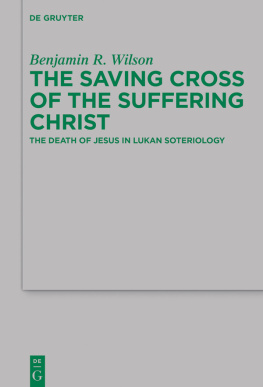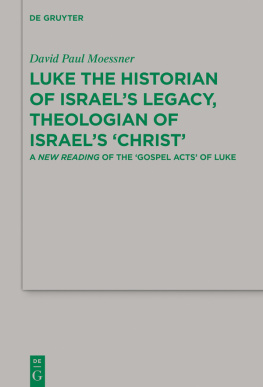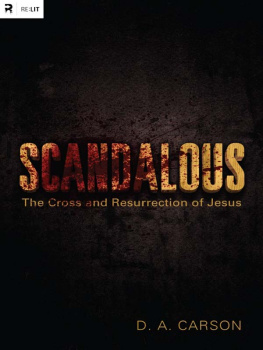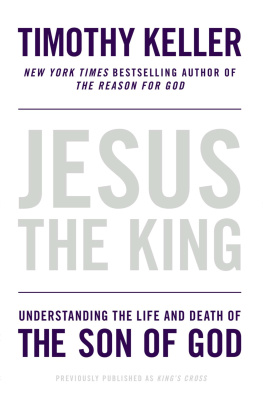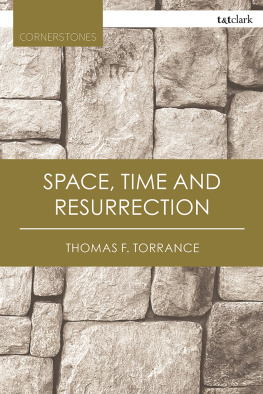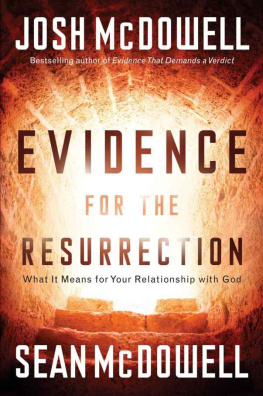Guide

Benjamin R. Wilson
The Saving Cross of the Suffering Christ
Beihefte zur Zeitschrift fr die neutestamentliche Wissenschaft

Edited by
Carl R. Holladay, Matthias Konradt,
Hermann Lichtenberger, Judith Lieu,
Jens Schrter and Gregory E. Sterling
Volume 223

ISBN 978-3-11-047582-1
e-ISBN (PDF) 978-3-11-047711-5
e-ISBN (EPUB) 978-3-11-047590-6
ISSN 0171-6441
Library of Congress Cataloging-in-Publication Data
A CIP catalog record for this book has been applied for at the Library of Congress.
Bibliographic information published by the Deutsche Nationalbibliothek
The Deutsche Nationalbibliothek lists this publication in the Deutsche Nationalbibliografie; detailed bibliographic data are available on the Internet at http://dnb.dnb.de.
2016 Walter de Gruyter GmbH, Berlin/Boston
www.degruyter.com
Preface
This book is a revision of a doctoral dissertation submitted to the Faculty of Divinity at the University of Cambridge in 2014. In the course of its completion and publication, I have accrued a substantial debt of gratitude to the supervisors, colleagues, friends, family members, and supporters who in various ways have enabled the books production.
My supervisor, Dr Simon Gathercole, has helped me at every turn. Dr Gathercoles attention to detail and precision in thinking are an inspiration, and I have learned a great deal from his patient reading, insightful feedback, and gentle direction. Likewise, Dr James Carleton Paget generously contributed considerable time and effort helping me to sort out my thoughts at various stages in this project, particularly during the second year of my research. His objective criticism was immensely useful, and his friendship enriched my time in Cambridge. My examiners, Dr Peter Head and Dr Grant Macaskill, offered much helpful criticism which has greatly aided in the revision of this work. I would also like to thank others who have given valuable advice on bits and pieces of this thesis, if only by mentioning their names: Professor Judith Lieu, Professor Steve Walton, Ben Pascut, Peter Malik, Chris Thomson, Colin Bullard, Sarah Dixon, and more generally, the NT Graduate Seminar at Cambridge.
The years spent in research for this project were a delight, largely on account of the broader relational context within which my research took place. St Andrews Street Baptist Church was a supportive and edifying church home for my wife and me during our time in Cambridge, and we could not have asked for a more gracious and kind community of friends than what we had over the years that this book was written. My parents kindly provided the necessary financial support for me to undertake this research project. I am truly grateful for their generous gift.
Finally, I am indebted to no one more than to my wife Rachael. She sacrificed much in order for me to pursue my dream, and her sense of humor kept me sane during the lonely times of my research. Thank you, Rachael, for your tireless encouragement. I would say that this book is dedicated to you, but then you would probably feel obliged to read it!
Citations and Abbreviations
Citations are in the form of Author-Date . Full references to the works cited can be found in the bibliography.
References to ancient literature generally follow the conventions established in P. H. Alexander et al . (eds.) , The SBL Handbook of Style: For Ancient Near Eastern, Biblical and early Christian Studies (Peabody, MA: Hendrickson, 1999).
Chapter 1 Introduction and History of Research
I.Introduction
What is the place of the cross in the thought of the third evangelist? The question is not as straightforward as it may initially seem. On the one hand, references to the rejection and suffering of Jesus can be found from the early chapters of Lukes gospel to the closing chapters of the book of Acts. Lukes whole story of the life of Jesus unfolds in the shadow of the cross, and the body of the third gospel progresses as one long journey to Calvary. The passion narrative itself extends over the course of two lengthy chapters, so that Jesus final hours occupy a prominence in Lukes narrative entirely out of proportion to the rest of Jesus life. Moreover, the death of Jesus is one of the core components of the apostolic proclamation in Acts. Indeed, with only a few exceptions, the story of Jesus begins with the cross for Christian preachers in Acts. Whatever its function in Lukan thought, clearly the death of Jesus emerges as a pivotal event in the Lukan narratives.
On the other hand, many interpreters have found that the Lukan cross is most distinctive for what it lacks. Unlike the other synoptic evangelists, Lukes gospel does not contain Jesus famous ransom saying that interprets his death as a redemptive event (cf. Mark 10:45; Matt 20:28). In addition, the dubious textual tradition behind the Lukan account of the last supper has convinced some interpreters that Luke did not originally preserve the soteriological interpretation of the cross found in Jesus words over the cup (Luke 22:19b-20). When one turns to the book of Acts, the early Christian sermons appear to treat the death of Jesus as a mere historical fact. Even the preaching of Paul in Acts seems to lack the sort of soteriological interpretation of Jesus death that is so conspicuous in Pauls own account of his gospel (cf. 1 Cor 15:35). The confluence of these assorted Lukan silences has led many interpreters to conclude that while the cross obviously occupies a central place in Lukes portrayal of the life of Jesus and the kerygma of the early apostolic mission, Jesus death actually stands at the margin of Lukan thought, an event relegated to the sacred past with little abiding significance for the contemporary church.
The present work represents my own attempt to come to terms with the Lukan cross, and I hope to demonstrate that the death of Jesus functions in Lukan soteriology as an event of pivotal salvation-historical importance. More specifically, I wish to show that Luke conceives of the crucifixion as a cultic act of atonement that results in the establishment of a new covenant relationship between God and his people, a relationship marked by the eschatological forgiveness of sins and experience of salvation. As such, for Luke the cross is central to Jesus fulfillment of scriptural expectations for the messiah, and so in the course of establishing the centrality of the cross in Lukan soteriology, one cannot help but uncover the importance of the cross for Lukan christology as well. Luke presents to us a Christ who suffers upon a cross that saves. The death of Jesus therefore occupies a prominent position within the thought of the third evangelist.
Before embarking upon a new analysis, however, it is important to examine the long history of scholarship bearing upon the Lukan perspective toward the death of Jesus. The development of differing attitudes toward Lukes conception of the passion is an interesting topic in its own right, and by tracing out the history of the discussion, one gains a greater sense of the methodological and exegetical issues that lie at the heart of the present scholarly stalemate concerning the Lukan cross. Thus, the remainder of this introductory chapter offers an account of the range of explanations that have arisen in order to interpret Lukes unique treatment of the death of Jesus. Upon surveying the full spectrum of previous interpretive endeavors, I will then comment briefly upon what I perceive to be the distinguishing elements of my own approach to the topic.

